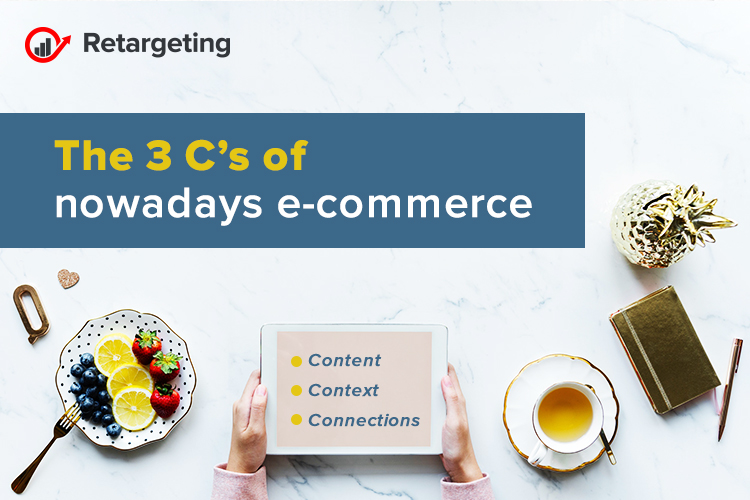Today’s e-commerce has evolved into an entire ecosystem and having a good website with a drop-down catalog, and a bug-free checkout it’s not enough anymore. All your competitors have the same things. The leading brands don’t sell a product, they sell an experience.
Experience-driven commerce is generated by engaging customers across different touch-points in distinct ways and integrating your product into their daily routines. Don’t forget, it’s not just about being omnipresent, but about being useful. You are there when they need you, you meet their needs in a personal and timely way, and they don’t even need to think when they click “Buy.”
The 3 C’s of commerce create that moment of delight. Anybody can sell a product, but only your brand can deliver in a way that makes people willing to pay for by applying the 3 C’s of e-commerce: Content, Context, and Connections.
Content
Digital catalogs and videos wooed and educated customers, then pushed customers to a link on a website. Apps provided an additional service or way to collect emails, and blogs gave SEO, and a reason to visit a site.
“Buy Now” buttons turn content into shoppable microchannels. Customers read it, like it, buy it without confusion and less time to change their mind. Since content can be tweaked to very specific markets and situations, the commerce-enabled messages should be useful and specific. Content no longer sounds like a “sales talk” but a helpful solution with built-in options to buy.
Context
In the age of e-commerce personalization, the secret of context includes “timing, timing, timing.” The best brands anticipate what customers want and when they want it.
The emphasis is on curating choices for individuals using technology like machine learning, artificial intelligence, sensors, GPS, and analytics. These work together to learn customer preferences and predict customer intent.
By applying all the data about your customers’ behavior, ads and promos feel less like intrusions and more like a personal shopper. You know what they are looking for, have scoped out the options and then tell them where to find what they want.
By using context, you don’t just narrow down choices, you liberate the busy, info-overloaded customer. E-shops that know customer preferences give them the one thing their money can’t buy: time.
Connections
Omnichannel experiences now allow companies to connect with customers in dozens of new and innovative ways. In-store tablets, smart devices, social networks, chatbots, and SMS all provide various touch-points that a business can use to connect with customers. This wide range of options means that businesses need to re-evaluate what each step’s objective is and how they can use them to forge meaningful connections with customers.
All these help customers get what they want and need, anytime and anywhere. They also provide opportunities for brands to find the ways that customers prefer to interact with them and to find new ways of delighting them at every turn. Companies have to adapt and meet customers “where they are.”
Loyalty is built on consistent, positive experiences. When omnichannel is done well every interaction gives customers another reason to love your brand. Why would they buy anywhere else?


